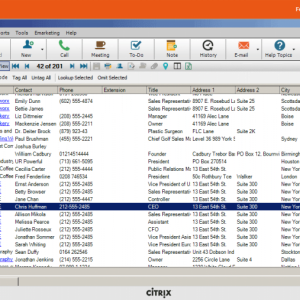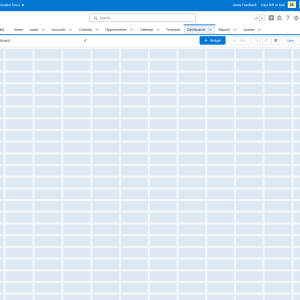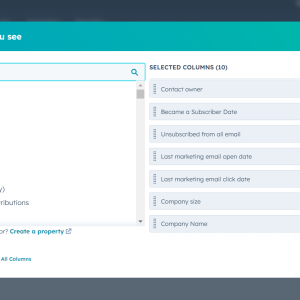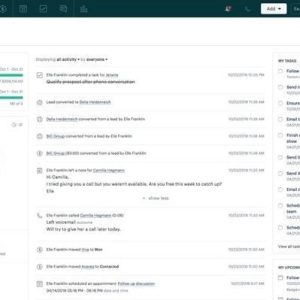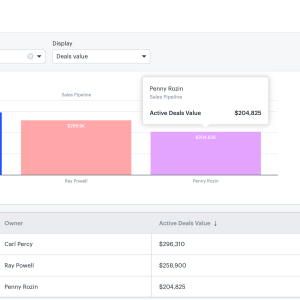Salesforce is a popular customer relationship management (CRM) platform that offers two distinct user interfaces: Salesforce Lightning and Salesforce Classic. While both versions aim to enhance productivity and efficiency, there are notable differences between the two. This article will provide an overview and comparison of Salesforce Lightning and Classic, highlighting their unique features, user experience, and benefits. Whether you are a new user evaluating which version to adopt or an existing user considering a switch, understanding the differences between Salesforce Lightning and Classic is crucial to making an informed decision.
When it comes to Salesforce Lightning vs Classic, Salesforce Lightning is the better option, offering a more modern interface and better advanced features to power your business.
You are viewing: Salesforce Lightning vs Classic Compared
The Lightning experience is the only way to be sure you’re getting access to new Salesforce updates as soon as they go live, and it’s the interface that new users will automatically get started with. Plus, Classic will eventually be phased out, so users might as well get used to Lightning now.
In this guide, we’ll explain the difference between Salesforce Lightning and Salesforce Classic, as well as review how each platform matches up as a CRM. If you’re unsure of which to opt for, comparing personalized quotes may help – use our simple Salesforce quotes tool to get prices in moments, or scroll down for a full comparison.
In this guide:
What Is Salesforce Lightning?
Salesforce Lightning is the modern version of the popular CRM of the same name. It provides users with a more intuitive interface — which our researchers found to be quite straightforward — compared to Salesforce Classic, as well as advanced features like custom branding and activity timelines. Additionally, while Salesforce Classic provides some of Salesforce’s AI-powered Einstein features, Salesforce Lighting provides access to all of them, so you can automate and improve your sales pipeline.
On top of all those extra features, Salesforce Lightning also provides access to robust app development programs that can help your sales team really take control of the funnel. Even better, these apps can be created without code, so you don’t need to be an engineer to create tools for your team.
Essentially, Salesforce Lightning is an updated version of Salesforce Classic that the CRM provider has been rolling out over the last few years to give long-term users a chance to switch over.
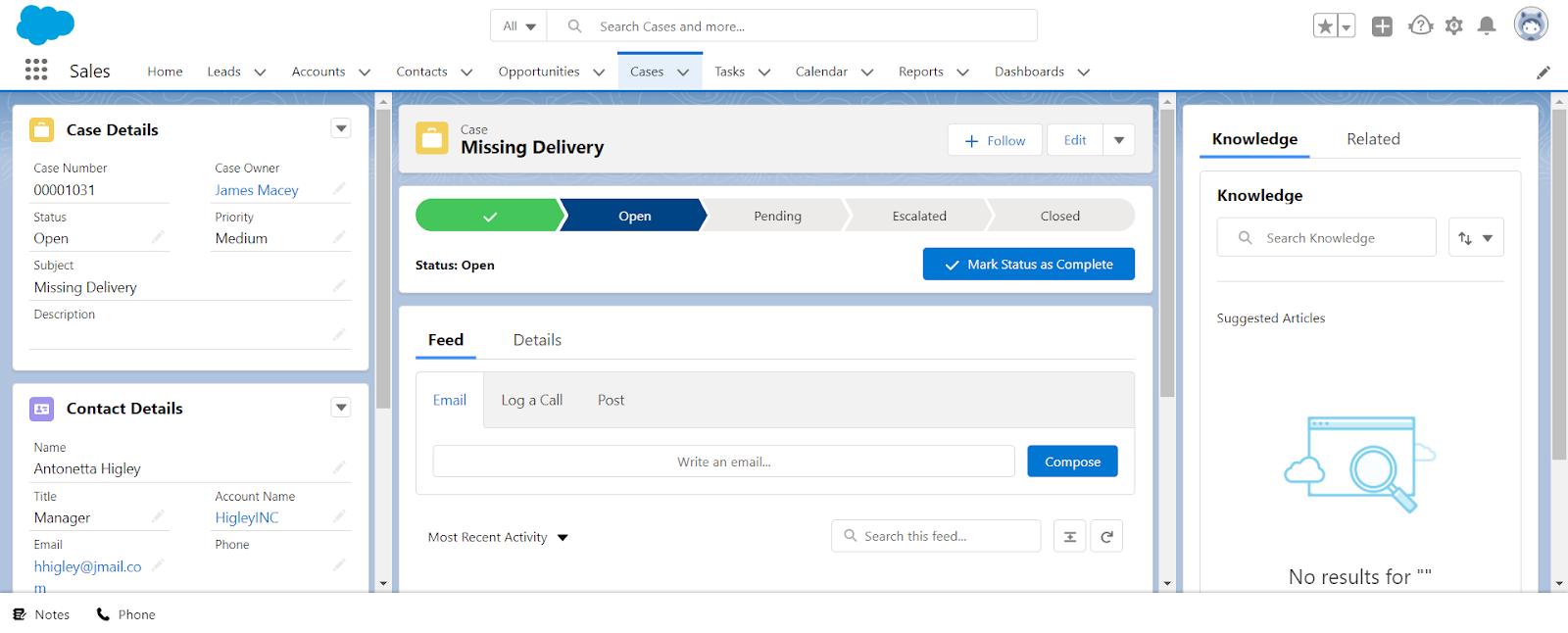
Cases page on Salesforce Lightning
Image: Hiddenshard Testing
Salesforce Lightning Benefits
Comparing the major feature differences between Classic and Lightning is like hitting a moving target, with new updates happening all the time. Here’s a quick look at a few of the biggest benefits Lightning offers over Classic:
Home features
Both interfaces offer Events, Calendars, and customizable dashboards, but only Lightning includes news, key deals, and a performance chart on the homepage.
Expanded forecasting
Classic offers revenue and quantity forecasts. However, our researchers found that Lightning allows users to store large levels of information: Revenue and quantity forecasts, product and schedule date forecasts, territory forecasts, forecast sharing, and other forecasts that are customizable by currency and number, capable of covering Opportunity, Opportunity Product, Opportunity Split, and Line Item Schedule.
Greater security
Lightning comes with LockerService, a feature that adds a layer of security between the components that make up the Lightning interface. Permissions also come with stronger authentication standards.
Activity timeline
Lightning includes a timeline to help users keep track of their history of activity for each account or each lead, but Classic does not.
Workspace page layout
Lightning enables users to design new types of pages, from App Pages to Home Pages to Record Pages, while Classic just offers one basic type of page.
Mobile Optimization
Salesforce Lightning is optimized for responsiveness across browsers – as well as mobile phones.
AI Integration
Salesforce Lightning has superior AI integration when compared with Salesforce Classic (more on this further down in the article). With Salesforce Lightning, you’ll get lead scoring and opportunity scoring functions that will help you direct customer support or marketing resources to the right customers.
Those looking for even more in-depth guidance should check out Salesforce’s feature comparison chart – spoiler alert, it’s very favorable towards Lightning.
What is Salesforce Classic?
See more : What Is a Sales Forecast?
Until the Lightning release, Salesforce Classic was the interface for the CRM platform. When you first take a look at Salesforce Classic you can see right away that it is not a modern web UI. It is very compact and text-centric with little attention paid to graphics and icons.
The graphics that do exist are typically small and aren’t displayed in high resolution. The overall result is that it is not easy to absorb information quickly in the Classic interface and navigation can be a little bit clunky.
Classic exists mostly for longstanding Salesforce users who aren’t ready to move to the newer interface. New users are put on Lightning by default, with the option to switch to the Classic interface under their user icon in the upper-right corner.

Contact profile in Salesforce Classic
Image: Salesforce
Salesforce Classic End of Life
Salesforce Classic won’t be around forever. However, no date has yet been set for when it’ll be completely phased out in favor of Lightning, although the mobile app was retired in 2017.
Classic was a massively popular interface during the 2000s and remains widely used. But the fact is that most of Salesforce’s updates are designed for either Lightning only or for Lightning and Classic together, rather than for Classic only, by a ratio of about 20-to-1. Eventually the Classic interface won’t be updated, and Salesforce will stop supporting it entirely to put their resources to better use. When that happens, we’ll let you know.
Salesforce Lightning vs Classic: Key Differences
If you have Salesforce veterans on your team, they are likely familiar with Classic. That could be an advantage if your team is returning to Salesforce, and the focus is on getting up and running as soon as possible. But this is only a short-term solution, as Lightning is the platform with the most active support, receiving updates to the platform immediately. Here are some of the key differences between Salesforce Classic and Salesforce Lightning:
- Salesforce Lightning has a more modern interface than Salesforce Classic
- Salesforce Classic and Salesforce Lightning cost the same
- Salesforce Lightning has more features than Salesforce Classic
- Salesforce Lightning gives users access to more Einstein functionality than Salesforce Classic
- Salesforce Lightning gets more updates than Salesforce Classic
Simply put, Salesforce Classic offers an outdated interface, while Salesforce Lightning provides a modern, intuitive user experience. With Salesforce Lightning, you’ll get access to advanced features and robust, informational dashboards, all without having to pay extra.

Main dashboard in Salesforce Lightning
Image: Hiddenshard testing
Why You Should Switch to Salesforce Lightning
For the vast majority of users Lightning is the way to go, especially if your company is brand new to Salesforce. The interface is much more comprehensible, faster, and it is the future of the Salesforce platform. Classic, meanwhile, can work for teams returning to Salesforce who are dead set in their old ways.
If you do choose Classic, be aware there’s a little uncertainty about its future. Salesforce has yet to announce an end date for Classic interface support, but it’s likely coming in the future.
Ultimately, new users should stick with Lightning unless there is some clear feature advantage to going with Classic. Even then, you’ll want to move to the newer interface when those key reasons for using Classic are solved in Lightning.
If you want to make the switch from Classic to Lightning, check out a free online tool from Salesforce, the Readiness Check. This will prepare a personalized report on what immediate benefits your company can expect from switching to Lightning, as well as any potential adjustments you’ll face in the process.
If neither of these Salesforce options feels right for you, that’s all right! We’ve put together a collection of Salesforce alternatives that could fit your needs a bit better than the popular CRM. Some of your best options include HubSpot, Zendesk, Microsoft Dynamics, Oracle, and Zoho CRM, but there are a few others could provide exactly what you’re looking for.
Considering other options, besides Salesforce? We’ve gathered the latest CRM Deals for small businesses, below.
Salesforce Lightning vs Classic UIs Compared
As a platform, Salesforce Lightning is simply a better option than Salesforce Classic, with a modern interface, more advanced features, and more regular updates to the service. This means your team can view information easier, make sales faster, and generally utilize the platform in more helpful ways.
The Lightning UI itself is a modern web UI with a mix of easier-to-read text, icons, and graphics providing a snapshot of your business. Simply put, it looks better, works better, and does more.
To see an example of how dramatic the difference is, look at the Home tab of both interfaces. Lightning offers a number of charts and lists to show you the current state of your business at-a-glance. Classic, by comparison, is focused on text and the Home tab is primarily a social style news feed showing your organization’s latest posts, emails, and tasks.




Home pages for Salesforce Lightning vs Classic compared
Image: Salesforce
See more : Zoho Pricing – How Much Does Zoho CRM Cost?
Drilling down a bit further, if you look at an opportunity record in Lightning, you see what Salesforce calls a highlights panel at the top with common action buttons, and the current state of the opportunity. Classic, on the other hand, shows a text-centric view of the same information. Figuring out whether the deal has closed requires scanning the small text of the “Opportunity Details” section.
Here’s a quick video overview of the Salesforce Lightning platform, including mobile and desktop views, the activity feed, workflows, third-party integrations, and more.
Salesforce Lightning vs Classic Cost
Wait for it. Salesforce Lightning doesn’t cost more than Salesforce Classic. The interfaces cost the same, starting at $25 per user, per month. Long-time users of the Classic version will be able to switch to Lightning without paying for a new license. Meanwhile, new customers will be recommended the Lightning interface by default.
However, the act of migrating from Classic to Lightning will include some additional costs, as users will need additional training and the company may need to do an audit to ensure that Lighting still offers the features they’ll need.
That said, the switch pays for itself: One Forrester study found that switching to Lightning saved each user an hour of work per week. Paired with other factors including less support and development time, switching to Lightning from Classic comes with a three-year ROI of 341% with a payback period of 14 months.
What’s New with Salesforce Lightning?
Salesforce is inarguably the most popular CRM on the market, and a large part of that popularity comes from the fact that it is frequently being updated to accommodate the requests of its customers. As a result, we’d like to make sure you’re fully up to date on all that’s new with Salesforce.
Most recently, Salesforce jumped on the AI bandwagon and launched a ChatGPT alternative that is designed to better facilitate seamless customer and client interactions across the platform.
“We’re announcing Einstein GPT, the world’s first generative AI for CRM. I think the future is really bright here. It’s creating a tremendous amount of opportunities for innovation within our ecosystem of products as well as our broader ecosystem.” – Patrick Stokes, EVP and GM for platform at Salesforce
To keep informed about future Salesforce updates, make sure to check back to learn more about what the CRM is rolling out for users.
A Closer Look at Salesforce Lightning and Einstein Integration
The Einstein AI is another selling point for the Lightning interface: Einstein automatically tackles data prep, modeling, and infrastructure updates needed to ensure your analytics are constantly updated in near-real time. It integrates well across the entire Lightning interface, from powering apps with abilities like image recognition and natural language processing to helping users predict the next best action for a specific lead or account.
Classic includes some integrations for Einstein, but Lightning has more. Opportunity insights, account insights, automated contacts, and the Bot Builder feature that lets users incorporate Einstein into their bots are all Lightning-only abilities.
Salesforce Lightning vs Classic: About Our Research
Hiddenshard is committed to providing you with value information on the best CRM options available, backed by thorough, independent research. Our team has spent hours collecting valuable data on providers like Salesforce in service of helping you make the right decision.
CRM software providers are put through a variety of tests to evaluate their performance for business. These metrics include features, pricing, customization, team infrastructure, customer support, and scalability.
To learn more about the process here at Hiddenshard, feel free to check out our in-depth research guide for a closer look at how we rate and rank business software.

Contact Info screen in Salesforce Lightning
Image: Hiddenshard Testing
That’s a wrap on “ Salesforce Lightning vs Classic Compared ” We hope you’ve found a trove of useful insights and fresh perspectives. Your opinions and ideas matter to us—join the conversation below and share your take! Hungry for more tech insights? Dive into our diverse collection of articles where innovation meets practicality. Discover More CRM Softwares.
Stay in the loop with the latest in AI and tech – your journey into the digital future continues at hiddenshard.com.
#Salesforce #Lightning #Classic #Compared
Source: https://hiddenshard.com
Category: CRM
